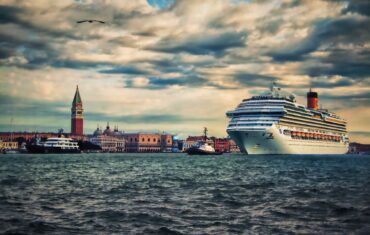Legend says the local tribe came across a dead crocodile. This good omen led to them settling around the lake and they became the Bena Ng’andu – The people of the Royal Crocodile. The lake itself became known as Ishiba Ng’andu – The Lake of the Royal Crocodile.
I first visited Shiwa Ng’andu back when I was a young overland expedition leader in the early 1990’s.
Arriving after a long and dusty journey from Nairobi, by way of Uganda, Rwanda, and Lake Tanganyika we arrived at a cottage which could have been in any English village. We were offered home-made butter and cheese (a delight after several weeks without either), and relaxed in what have to be some of the most welcome hot springs I have ever experienced. Heaven!
The ‘English’ cottage on its own was strange enough, sitting as it did in the middle of the African bush, but it was only next day when I visited the impressive main ‘manor house’ that I realised quite what a colonial oddity Shiwa Ng’andu is.
A housekeeper led us on a tour around the wood-panelled manor where pictures of ancestors in dusty frames watched us move around the dust covered furniture. I was told that the estate was in limbo with the owner overseas, but then this quirky location was forgotten because we were young and more eager to discover the adrenaline filled delights and bars of Victoria Falls.
“In a remote corner of Africa stands a magnificent three story pink bricked mansion….from which a Union Jack fluttered…Something one might find in Surrey or Hampshire belonging to a Duke or a Lord”
— ‘THE AFRICA HOUSE’ BY CHRISTINA LAMB
I thought nothing more about it until I had ceased overlanding and was instead a tour leader for rather more relaxing coach tours around the globe. Browsing in an airport bookshop before a tour, a familiar manor house on a book cover caught my eye. It was “The Africa House” by Christina Lamb. Intrigued to know more about the mysterious English estate that I’d visited year ago I purchased it and was even more fascinated when I read about its fascinating history.
The book is well worth a read, but the gist of the story is this.
Sir Stewart Gore-Browne was an English gentleman who had a vision to create an English country estate in the heart of Africa, complete with Manor House, farm, and tenant cottages.
Sir Stewart was insistent on replicating his homeland in every detail – building classic furniture out of local wood and importing an entire library, collection of ornaments and paintings from England.
However, that was where his imitation of English ways ended. He despised his contemporary colonialists’ attitudes towards Africa and believed in creating a Utopian society on his African estate. He created a hospital and schools and employed over 1,800 locals.
In terms of financing the operation, there were failures along the way, until the estate started growing citrus crops which could be transported out of the remote location.
Sir Stewart became an important political figure and mentor to the country’s first president in the early 1960s. Sir Stuart Gore-Browne was knighted by George VI. In addition, he was appointed a Grand Officer of the Companion of the Order of Freedom (the highest honour ever to be received by a white man in the country to this day).
Sir Stuart Gore-Browne was born an Englishman and died a Zambian. He was an inspirational thinker and man of action. I believe he is the only white person to have received a full state funeral in Africa. After his burial in 1967, he was given the honour of the local Bemba chiefs and buried upon a holy hill in Shiwa.
“Surely if men are sufficient masters of things to build a howitzer
they ought to know better than to destroy each other with it.”
— SIR STEWART GORE-BROWNE
Africa, and indeed the world, could do with more like him.
Some ten years after I visited Charley Harvey, one of Sir Stuart’s grandchildren, and his wife Jo returned to rebuild the manor house. Dilapidated and run down when I visited, they’ve restored the house to its former glory and restocked the game on the farm. Shiwa has four comfortable en-suite guest rooms, furnished with most of the original pieces from Gore Browne’s era creating a feeling of by gone times. Pictures and paintings fill the house, along with historic objects – each one provides a story and memory.
Mealtimes are an opportunity to sample the delicious farm produce and sit at the original dining room table that Shiwa Manor House Gore-Browne frequented in full dress whilst entertaining various dignitaries, from Zambian President’s, European Royalty and friends from around the world. The Harvey’s are keen to share their knowledge of history and stories surrounding Shiwa and Zambia.
You can explore the estate on horseback, foot or vehicle. There are sitatunga along with over 20 other species and over 375 birds. You can also still visit the nearby Kapishya Hot springs (in which I’d soaked my weary overlanding bones!). This is certainly one of the most fascinating and unique destinations in Zambia, and combines well with a trip to Bangweulu, Kasanka and North Luangwa along the ‘Great North Road’.
Even if you aren’t visiting, for anyone intrigued by the story of Sir Stuart Gore-Browne “The Africa House” by Christina Lamb is a great read – describing his somewhat complicated personal life and his struggles to build the estate.
A visit to Shiwa Ng’andu can be included in a trip along the Great North Road and onward to North Luangwa as part of a ‘circuit’ taking in the South Luangwa too.


